February 10 2018. Algonquin Park, ON. I thank my new-ish group of friends for a last-minute invitation to join them on a weekend birding the snows of Ontario’s Algonquin Park. The majority of Ontarians view Algonquin as The North, though really it’s not. It lies at about 46°N on roughly the same latitude as Portland, Oregon, Croatia and Venice, hardly sub-arctic. But it’s an understandable perception since it can be eye-wateringly cold up here in February and the dramatic, rocky and lake-dotted landscape has a lumberjack country feel to it. In any case, anything more than a three hour drive from the city starts to seem like terra incognita.
It is a different world from southern Ontario: the Algonquin highlands are, in altitude, about 500 metres higher and geologically, topographically and climatically different. All of those factors taken together mean the biotic contents of Algonquin have little in common with the softer lowland south. It is landscape for year-round recreation by canoe trippers, campers and snowmobilers.
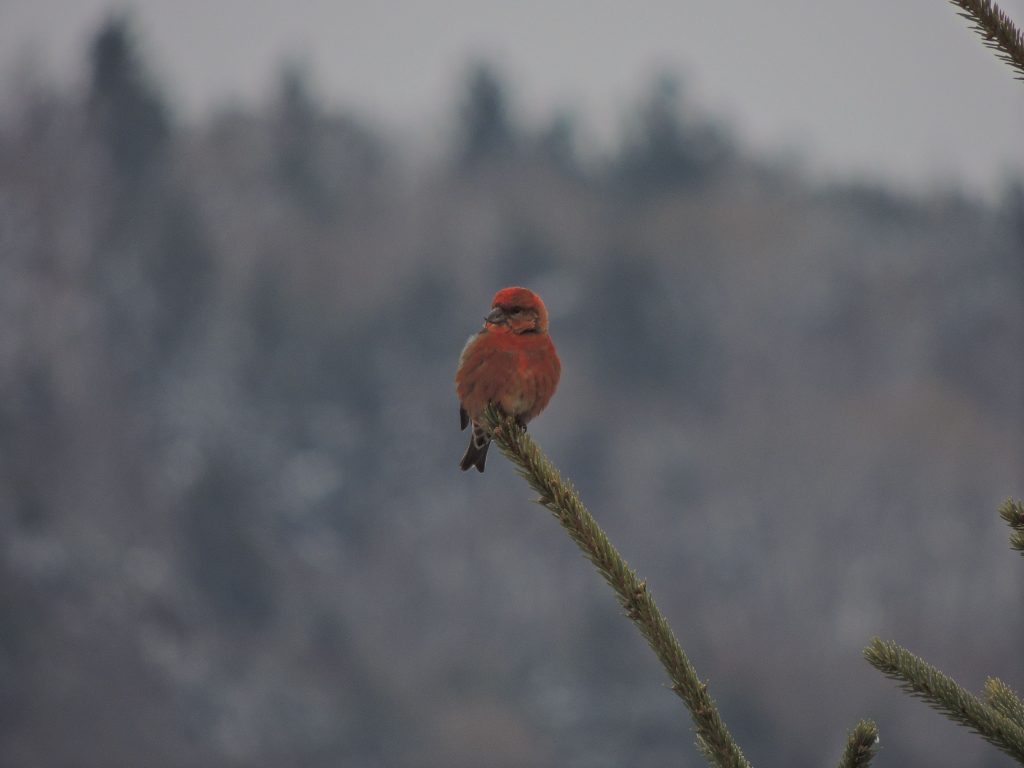
We left the comforts of our heated cabin as early as we could today and had hardly gone half a kilometer before we saw a Red Crossbill on the tip of a White Spruce, and not long afterwards pulled to the roadside to watch a more crossbills associating with a handful of Pine Siskins. After several such stops and diversions we had to acknowledge that we really should keep going and eventually arrived at the park’s visitor centre where the viewing platform provides a spectacular opportunity to watch and photograph birds and sometimes deer, moose and wolves.
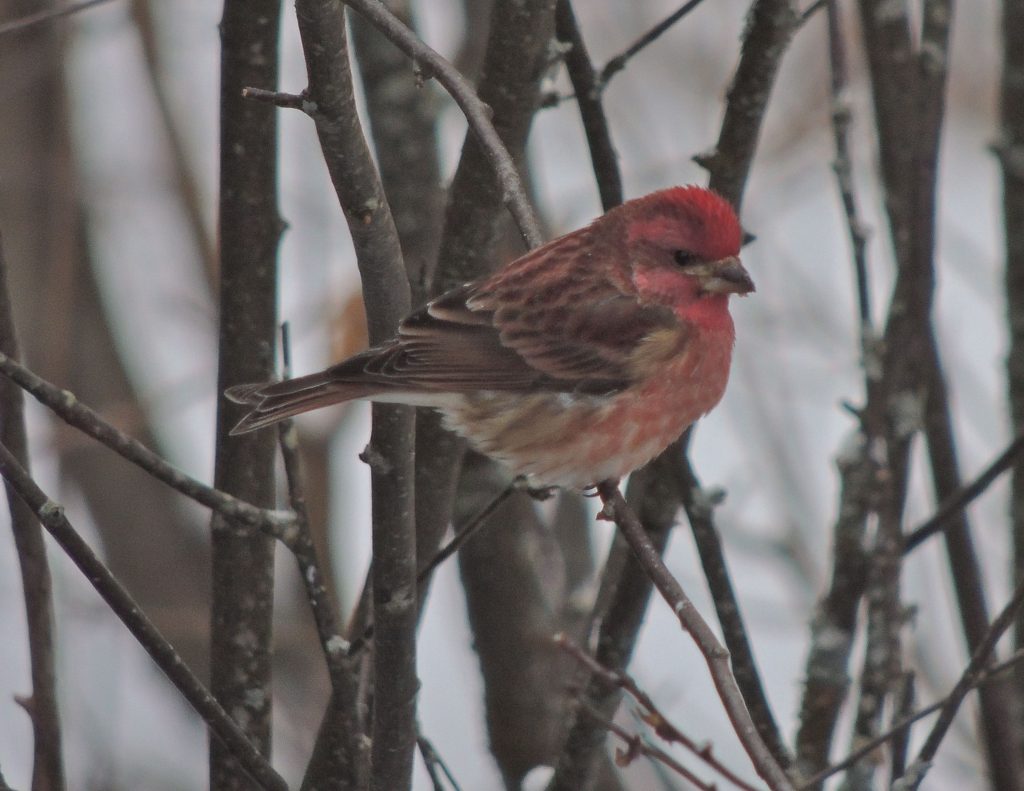
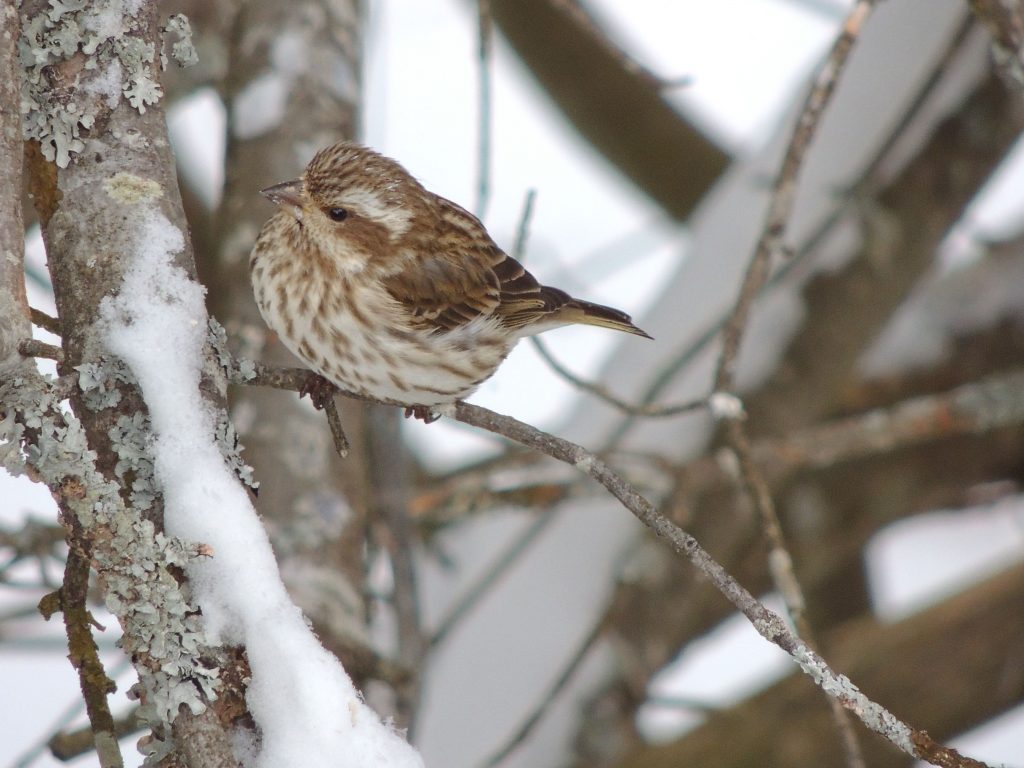
Many birders make a mid-winter pilgrimage here to seek out cold-hardy ‘northern’ bird species, with itinerant finches as a special target. We missed Redpolls and Pine Grosbeaks but saw many Pine Siskins, Red, and White–winged Crossbills, Purple Finches and Evening Grosbeaks all of which depend on a winter diet of conifers and alder seeds. Charming, but overlooked by many, were many Red-breasted Nuthatches. I suppose they’re too commonplace to command much attention but I enjoyed a prolonged conversation with this one which I’m sure believed I was bringing food for it. Sadly no, it left empty but I got this close-up photo.
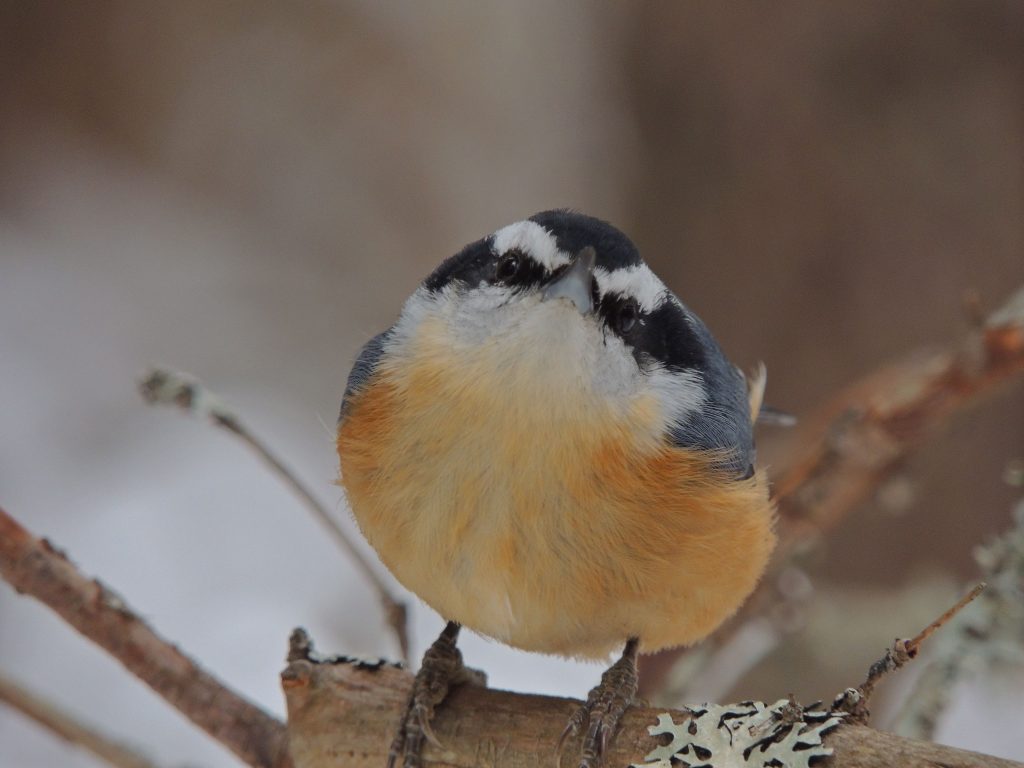
Crossbills are so called because their upper and lower mandibles are specially adapted to pry open pinecones. And there is a really interesting, if somewhat complicated, symbiotic relationship between crossbills and coniferous trees that should be worth a paragraph or two; I’ll try to keep it brief.
Conifers such as spruces, pines and hemlocks (all found in Algonquin) go through feast or famine cycles of cone production, several years of modest production followed by periodic bumper-crop years. Each cone holds dozens of seeds and it is a spruce’s hope and expectation (if it is capable of such sentiment) that at least one of those seeds will find fertile ground and be the next generation. Birds and rodents like those seeds too and will eat every last one given the chance.
Biologists believe that a series of modest cone-production years is effective in holding the populations of squirrels and the like at a subsistence level. Then just when those seed-eaters least expect it, the conifers have a big year and produce huge, branch-bending crops of seed-bearing cones. It’s a strategy to improve the odds that a seed will survive to germinate before a mouse, chipmunk or squirrel eats it.
Birds have been around a long time too, long enough for certain species to find a way to live with and exploit the conifers’ surprises. Birds have mobility that rodents do not, so enter the crossbills: Red, and White-winged. They are highly nomadic species driven by the variable nature of cone production and are found across North America and Eurasia. So when the spruces, pines and hemlocks of Algonquin produce big crops, crossbills from across the continent somehow find them. This is one of those rare bumper-crop winters and it makes for good birding; next year when Algonquin’s cone crop is likely to be just so-so the crossbills will be somewhere else.
A feast is one thing and in response the crossbills are now starting to breed; they can initiate breeding at any time of year. It was way below freezing and snowing purposefully as I started to write this yet the male crossbills were in full courtship singing and selecting a mate. Some have nests and eggs already and, being mid-winter, the females must sit tight incubating eggs and protecting their chicks while the air temperature may fall to -30 C. She dare not leave the nest so the males’ job is to bring food for everyone.
Needless to say that for this first day of this weekend my Birds of the Day were crossbills. There were many other very inspiring birds to be admired, but I’ll get to them tomorrow.
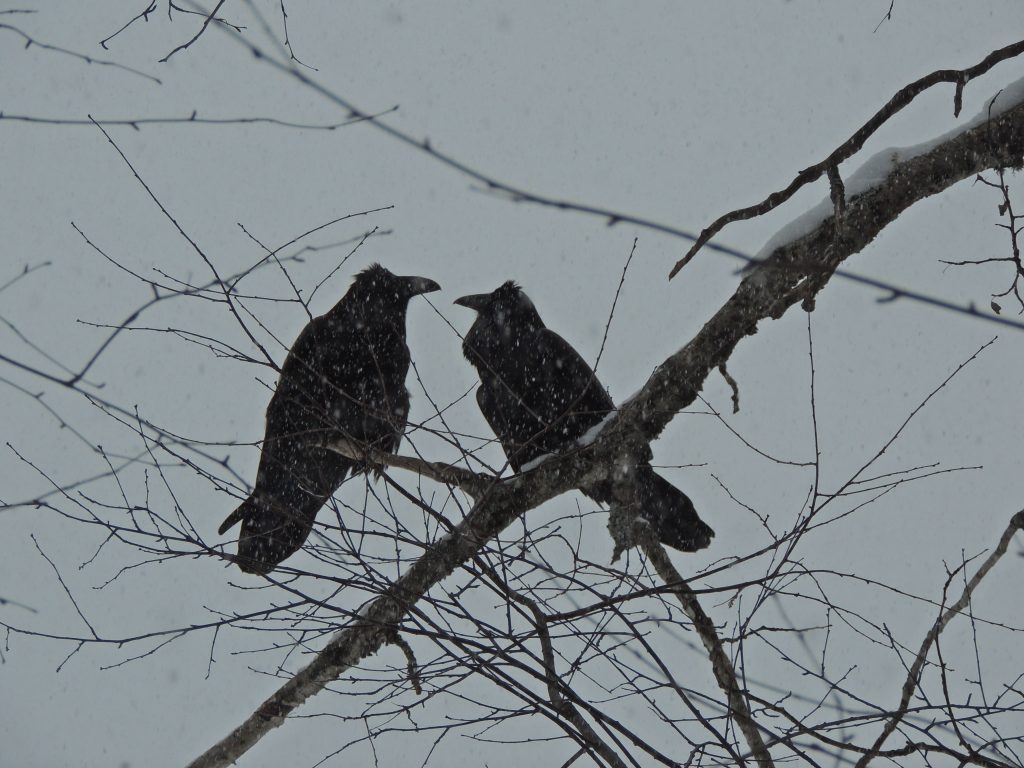
That’s a nice summary of our first day. Glad you could overcome your aversion to cold weather and join us.
Your Crossbill seem very similar to the European Crossbill (Loxia curvirostra) but most worrying when I keep reading about all the snow!!!! We will be in Toronto in mid-May and wondering what clothing I should be bringing!!! At the moment all looking good for our day’s birding but we will communicate again nearer the time.
Sounds like a really great weekend!
I LOVE Nuthatches, especially the Red-breasted! I never tire of them! Great shot!
Thanks!
I had no idea Crossbills could breed in the depths of winter. Thank you for that information. But shame on you for not hand-feeding that Red-breasted Nuthatch! He looked so expectant- adorable.